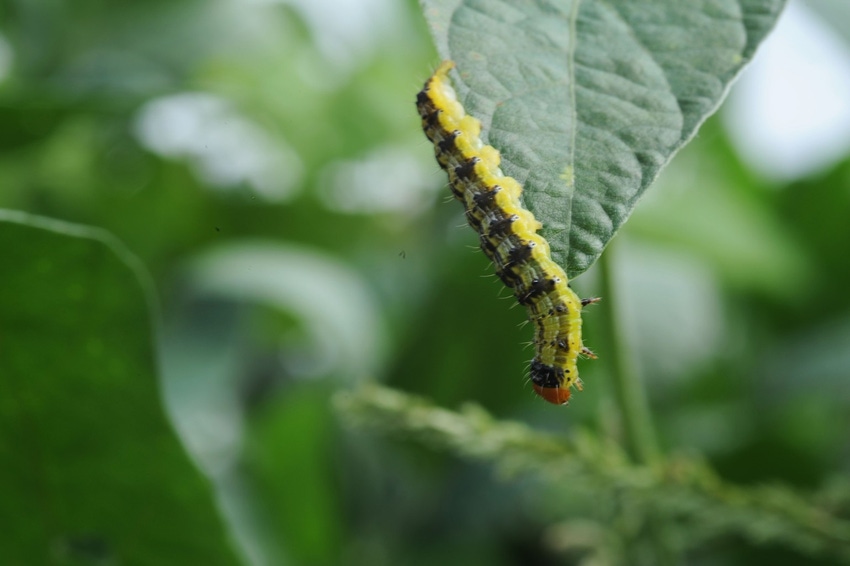
With a good soybean crop this year in North Carolina and good prices, Dominic Reisig is getting questions from farmers wondering if they should go ahead and tank-mix an insecticide with their fungicide in order to protect their investment from corn earworms.
For the most part, Reisig, a North Carolina State University Extension entomologist, advises “no.” Importantly, Reisig strongly advises against tank-mixing an insecticide and applying for corn earworm control when the soybean plant reaches R4.
“I’m going to say absolutely not. The reason for that is the ecology of the insect. They really like to lay in blooming beans. By the time you get toR4, we have teeny tiny pods not blooms. It’s not attractive for egg laying,” Reisig said at the Blacklands Farm Mangers Tour Aug. 4 at Turnpike Farms in Pantego, N.C.
“This insect, as a caterpillar, is a fruit feeder, so what this insect does is it moves into the crops as they are flowering. It lays eggs. Those caterpillars can then develop on the flowers and small fruiting structures, and then when they get really big, they can feed on the crop as it’s developing,” Reisig said.
Reisig pointed to research done in six locations for the past two years across North Carolina by N.C. State that shows for the most part tank-mixing with a fungicide to control corn earworms in soybeans is a losing strategy.
“In only one out of those three locations did we have populations that exceeded thresholds, so if you were going to spray automatically at flowering, 33% of the time that would have paid off. At $15 or $20 an acre, that doesn’t sound like a money-saving strategy. It would be better to do this in your double-crop beans, planted in June and even July, when you are at more risk for corn earworm. The problem is that every year is different,” he said.
Reisig said it is critical to understand the growth habits of the soybean plant, particularly now that farmers are shifting more to early maturing varieties that offer more indeterminant growth habits. He said as farmers plant more indeterminant varieties, the corn earworm may behave differently than they do in determinant soybeans.
“The reason for that is in an indeterminant growth habit you can have flowers and pods present on the plant at the same time. Once that plant flowers it’s continuing to grow vegetatively. Determinant beans don’t do that. They flower, they set pods. Earworms develop based on that. Earworms really like a buffet; they don’t like to eat just one thing,” he explained.
Reisig said the research reveals that corn earworms like to lay eggs at R1 or R2, regardless if the soybean plant has an indeterminant or determinant growth habit. Even though some flowers may still be present at R4, the corn earworm is not likely to go in and lay eggs.
“The other thing we found was we did seem to have more feeding, but that it was specific to maturity and not growth habit. In those high-pressure locations, the soybean plant was able to compensate. It was able to fill that seed weight a little more, and by the end of the year we had yields that were equivalent across those indeterminant and determinant growth habits,” Reisig said.
Read more about:
Corn EarwormAbout the Author(s)
You May Also Like






